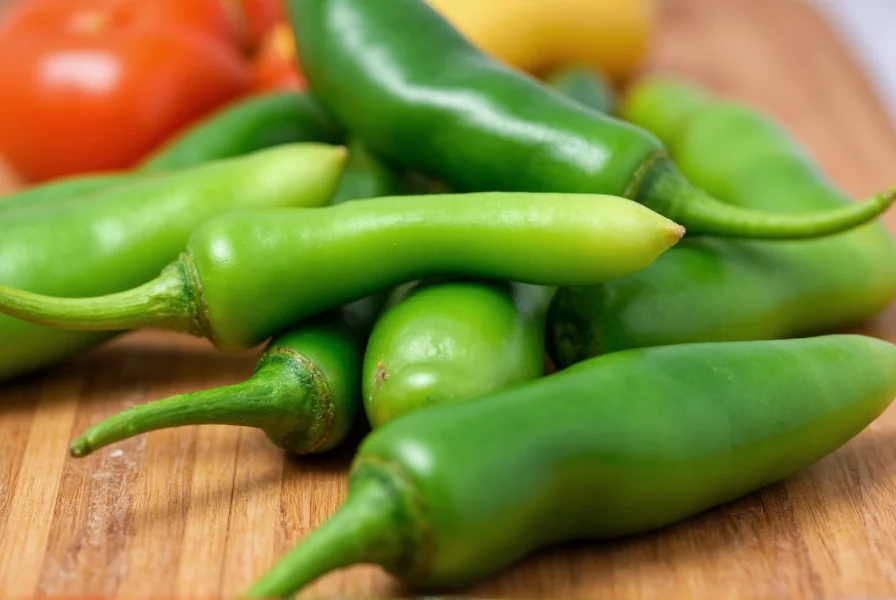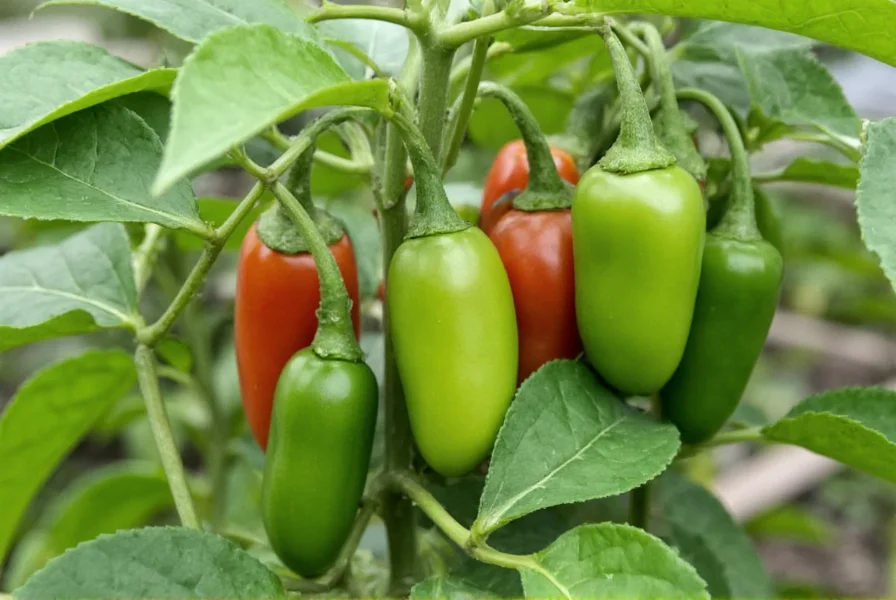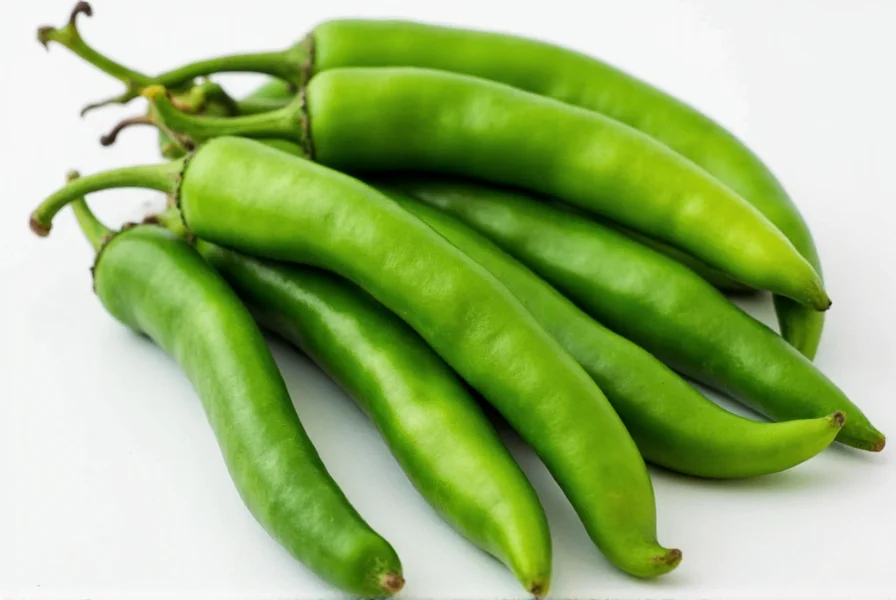Jalapeños represent one of the most popular chili peppers worldwide, striking the perfect balance between manageable heat and distinctive flavor. Understanding their characteristics helps both home cooks and culinary professionals utilize them effectively in various dishes.
Understanding Jalapeño Heat Levels
When exploring how hot are jalapeno peppers compared to other chilies, they fall in the medium range of the Scoville scale. The heat measurement for jalapeños typically ranges from 2,500 to 8,000 Scoville Heat Units (SHU), though environmental factors can cause variations. For context:
| Pepper Type | Scoville Heat Units | Heat Comparison |
|---|---|---|
| Jalapeño | 2,500-8,000 SHU | Moderate heat |
| Serrano | 10,000-23,000 SHU | 2-3 times hotter than jalapeño |
| Habanero | 100,000-350,000 SHU | 15-40 times hotter than jalapeño |
| Bell Pepper | 0 SHU | No heat |
The heat in jalapeños comes primarily from capsaicin concentrated in the white pith and seeds. Removing these parts significantly reduces the pepper's spiciness while maintaining its distinctive flavor profile. This knowledge proves essential when answering what is the scoville scale for jalapenos in practical cooking applications.

Nutritional Profile and Health Benefits
Examining jalapeno pepper nutritional benefits reveals why these peppers deserve regular inclusion in a balanced diet. A single raw jalapeño (14g) contains:
- Only 4 calories
- 80% of the daily recommended vitamin C
- Significant vitamin A and B6
- Small amounts of potassium and magnesium
- High capsaicin content
Research suggests capsaicin, the compound responsible for jalapeños' heat, may offer several health advantages. Studies indicate potential metabolic benefits, including modest increases in calorie burning and fat oxidation. The anti-inflammatory properties of capsaicin may help reduce certain types of pain when used appropriately.
When considering jalapeno pepper health effects, it's important to note that while generally safe for most people, excessive consumption can cause digestive discomfort for sensitive individuals. The peppers' high vitamin C content supports immune function and skin health, making them valuable beyond their culinary applications.
Culinary Applications and Preparation Techniques
Mastery of how to use jalapeno peppers in cooking opens numerous culinary possibilities. Fresh jalapeños work well in salsas, guacamole, and as toppings for tacos and nachos. Their flavor profile evolves significantly when prepared differently:
- Raw: Bright, grassy flavor with immediate heat
- Roasted: Smoky, sweeter profile with milder heat
- Pickled: Tangy flavor with reduced heat intensity
- Smoked (Chipotle): Deep, complex smokiness with earthy notes
For those concerned about handling spicy peppers, wearing gloves prevents capsaicin from transferring to sensitive areas like eyes. To reduce heat while preserving flavor, remove seeds and white membranes thoroughly. When incorporating jalapeños into dishes, add them gradually and taste as you go to achieve the desired spice level.
Growing and Selecting Quality Jalapeños
Understanding jalapeno pepper growing tips helps gardeners produce optimal yields. These peppers thrive in warm climates with full sun exposure and well-draining soil. Key growing considerations include:
- Plant after last frost when soil temperature exceeds 60°F (15°C)
- Provide consistent moisture without waterlogging
- Harvest when peppers reach 2-3 inches long and vibrant green
- Allow some peppers to ripen to red for sweeter flavor
When selecting jalapeños at the market, look for firm, glossy peppers without wrinkles or soft spots. Green jalapeños offer the classic sharp flavor, while red jalapeños (fully ripened) provide a sweeter, fruitier taste with slightly more heat. The choice between green and red depends on your recipe's flavor profile requirements.

Proper Storage Methods
Learning how to store fresh jalapenos properly extends their shelf life and maintains quality. For short-term storage (1-2 weeks), keep unwashed jalapeños in the crisper drawer of your refrigerator. For longer preservation:
- Freezing: Slice or leave whole, then freeze in airtight containers (up to 6 months)
- Pickling: Preserves for 6-12 months in refrigerator
- Drying: Creates versatile dried peppers for grinding into powder
- Roasting and freezing: Preserves flavor for cooked dishes
Never store jalapeños near ethylene-producing fruits like bananas or apples, as this accelerates ripening and spoilage. When handling preserved jalapeños, always use clean utensils to prevent contamination.
Common Varieties and Substitutes
Exploring jalapeno pepper varieties reveals several specialized cultivars developed for specific purposes:
- Early Jalapeño: Matures faster for shorter growing seasons
- Mucho Nacho: Larger peppers ideal for stuffing
- TAM Jalapeño: Developed for consistent heat and disease resistance
- Black Jalapeño: Unique dark color with similar heat profile
When jalapeños aren't available, suitable substitutes depend on your heat tolerance and flavor requirements. For jalapeno vs serrano heat comparison, serranos offer similar flavor with significantly more heat (2-3 times hotter). Poblano peppers provide milder heat with comparable earthiness, while Fresno peppers offer nearly identical heat with slightly fruitier notes.
Frequently Asked Questions
How can you reduce the heat of jalapeños while cooking?
To reduce jalapeño heat, carefully remove all seeds and white membranes (placenta), which contain most capsaicin. Soaking sliced peppers in salt water or vinegar for 15-30 minutes can further reduce heat. Cooking methods like roasting or boiling also diminish spiciness compared to using raw peppers.
What causes some jalapeños to be much hotter than others?
Jalapeño heat varies due to environmental stressors during growth. Factors like water availability, soil conditions, temperature fluctuations, and sunlight exposure affect capsaicin production. Peppers grown with less water or in hotter conditions typically develop higher heat levels as a natural defense mechanism.
Are red jalapeños hotter than green ones?
Red jalapeños are typically slightly hotter than green ones because they've had more time to develop capsaicin as they ripen. However, the difference is often minimal. Red jalapeños offer a sweeter, fruitier flavor profile compared to the brighter, grassier notes of green jalapeños, making them better suited for certain recipes despite the marginal heat increase.
Can you eat jalapeño seeds and is it safe?
Yes, jalapeño seeds are completely edible and safe to consume, though they contain the highest concentration of capsaicin. Many people remove seeds to reduce heat, but including them provides maximum spiciness. The seeds pass through the digestive system without being absorbed, so they pose no health risks beyond contributing to the overall heat level of the dish.
How long do fresh jalapeños last in the refrigerator?
Properly stored fresh jalapeños last 1-2 weeks in the refrigerator when kept in the crisper drawer in a perforated plastic bag or paper bag. For optimal freshness, avoid washing them before storage. Signs of spoilage include soft spots, wrinkling, mold, or an off smell. For longer preservation, consider freezing, pickling, or drying your jalapeños.











 浙公网安备
33010002000092号
浙公网安备
33010002000092号 浙B2-20120091-4
浙B2-20120091-4